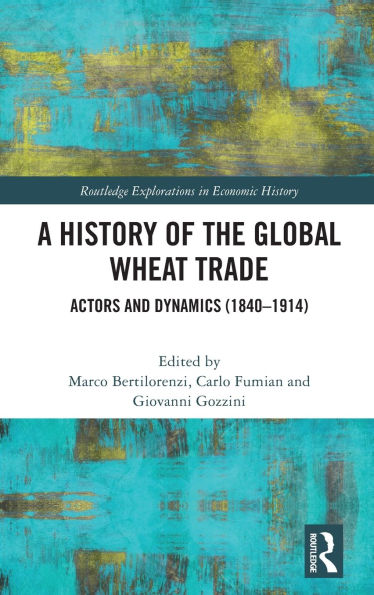This book explores the historical origin of the global wheat market, offering an actor-centred view of the history of this new global commodity. The contributions to this volume demonstrate that the development of the global wheat trade through the late 19th and early 20th centuries has not only impacted the world food regime, it also led to the dissemination of new economic institutions. Countless technological innovations, such as elevators or telegraphic lines, have paved the way to the creation of new financial tools for trade, such as futures and grain exchanges, which transformed the market. The book also examines new global actors, such as Cargill, Louis-Dreyfus, or Bunge y Born, who took advantage of the new opportunities provided by the interlinked and globalized world grain trade. For the first time in history, the price of a single commodity which was crucial for human life ended up being decided in the areas of production by the producers and started to be fixed further afield, in specific and anonymous trading places.
The book will be of great interest to historians of economics, business, trade, agriculture, globalization, and commodities.
This book explores the historical origin of the global wheat market, offering an actor-centred view of the history of this new global commodity. The contributions to this volume demonstrate that the development of the global wheat trade through the late 19th and early 20th centuries has not only impacted the world food regime, it also led to the dissemination of new economic institutions. Countless technological innovations, such as elevators or telegraphic lines, have paved the way to the creation of new financial tools for trade, such as futures and grain exchanges, which transformed the market. The book also examines new global actors, such as Cargill, Louis-Dreyfus, or Bunge y Born, who took advantage of the new opportunities provided by the interlinked and globalized world grain trade. For the first time in history, the price of a single commodity which was crucial for human life ended up being decided in the areas of production by the producers and started to be fixed further afield, in specific and anonymous trading places.
The book will be of great interest to historians of economics, business, trade, agriculture, globalization, and commodities.

A History of the Global Wheat Trade: Actors and Dynamics (1840-1914)
356
A History of the Global Wheat Trade: Actors and Dynamics (1840-1914)
356
Product Details
| ISBN-13: | 9781032642291 |
|---|---|
| Publisher: | Taylor & Francis |
| Publication date: | 04/29/2025 |
| Series: | Routledge Explorations in Economic History |
| Pages: | 356 |
| Product dimensions: | 6.12(w) x 9.19(h) x (d) |
